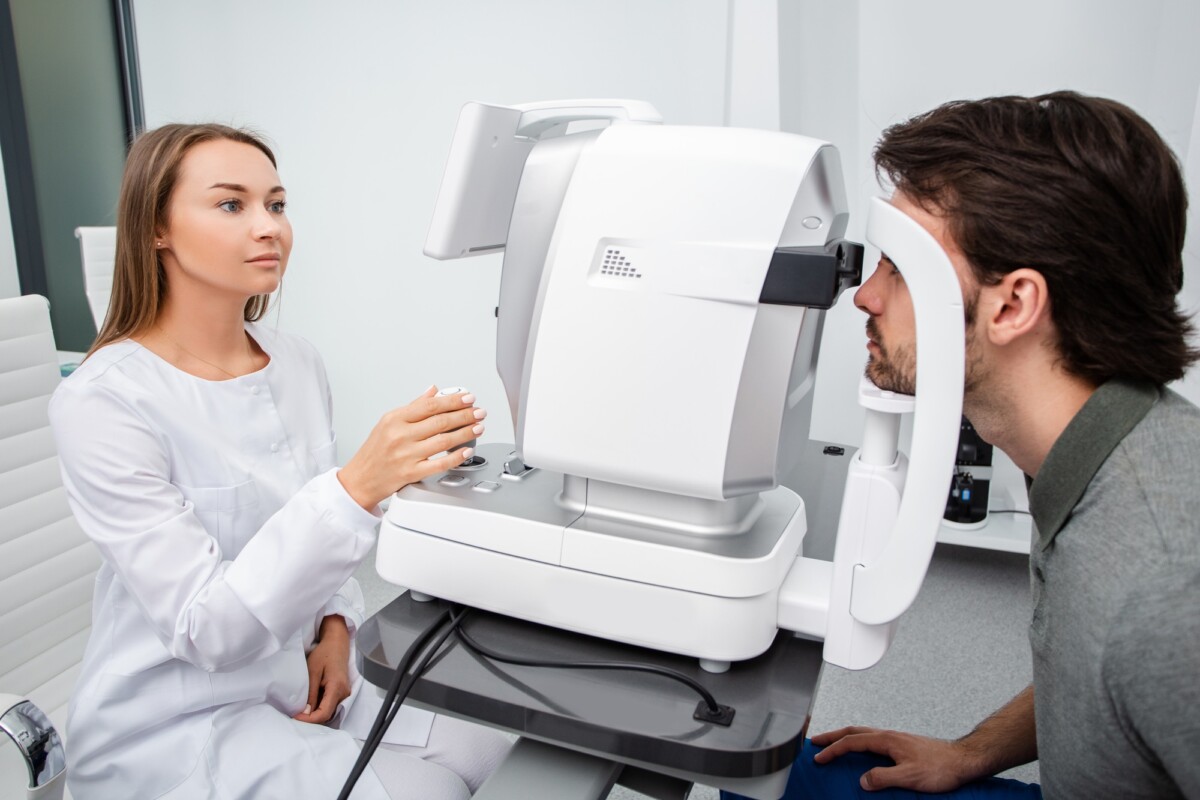Regular eye visits are essential for maintaining health, yet they are often overlooked. Understanding the eye visit cost is vital for budgeting and prioritizing vision health. Eye exams can detect issues early, potentially preventing serious problems later.
Factors Influencing Eye Visit Costs
Location
- Urban areas typically have higher costs due to demand.
- Rural areas may offer lower prices.
Type of Eye Care Provider
- Optometrists generally charge less than ophthalmologists.
- Specialists may have higher fees for specific conditions.
Insurance Coverage
- Many plans cover routine exams, but check for copays and deductibles.
The average eye visit cost in the U.S. ranges from $50 to $250, with basic exams around $100.
Importance of Regular Eye Exams
Preventive Care
- Early detection of issues like glaucoma can lead to better outcomes.
Vision Correction
- Eye exams determine the need for glasses or contacts.
Overall Health Monitoring
- Exams can reveal signs of conditions like diabetes.
With nearly 50% of Americans over 60 experiencing vision impairment, regular visits are a worthy investment in health.
Tips for Managing Eye Visit Costs
Shop Around
- Compare prices and look for community clinics.
Utilize Insurance Benefits
- Check your plan for coverage details.
Look for Discounts
- Some providers offer cash payment discounts.
Being proactive about eye care ensures necessary treatment without financial strain. Investing in vision is investing in quality of life!
Factors Influencing Eye Visit Costs
Understanding the costs associated with eye visits is essential for maintaining vision. Eye visit costs can vary significantly based on several factors, which can help you plan your budget effectively. Whether for a routine check-up or specific vision issues, knowing what influences these costs is vital.
Type of Eye Care Provider
- Optometrist vs. Ophthalmologist: Optometrists generally charge less than ophthalmologists, who are specialized medical doctors. Costs also vary by location, with urban areas often being pricier. A routine exam with an optometrist may cost $75 to $150, while an ophthalmologist visit can range from $100 to $300.
Type of Services Required
- Routine Exams vs. Diagnostic Tests: Standard eye exams are less expensive than specialized tests. For example, a routine exam might cost $100, but additional tests can push costs over $300.
Insurance Coverage
- Insurance Plans: Your insurance coverage significantly affects out-of-pocket expenses. In-network visits usually cost less, with copays ranging from $10 to $50, while uninsured individuals may face higher fees. In summary, understanding these factors can help you make informed decisions about your eye care and manage costs effectively.
Average Costs of Eye Exams by Region
Understanding the costs associated with eye visits is essential for maintaining eye health. Eye exams help detect vision problems and identify underlying health issues. Knowing the average costs of eye exams by region can aid in budgeting for these important check-ups.
Eye visit costs vary significantly by location. Here’s a summary of average costs across different regions:
Northeast
- Average Cost: $150 – $250
- Higher costs in states like New York and Massachusetts due to living expenses.
- Insurance often covers part of the exam, reducing out-of-pocket costs.
Midwest
- Average Cost: $100 – $200
- Generally, costs are lower in states like Illinois and Ohio.
- Discounts may be available for students or seniors.
South
- Average Cost: $90 – $180
- Pricing varies widely, influenced by urban versus rural settings.
- Many clinics offer promotional rates or package deals.
West
- Average Cost: $120 – $220
- Higher costs in California and Washington, while states like Idaho may be lower.
- The increasing popularity of telehealth options may lower routine check-up costs.
Insurance Coverage for Eye Visits
Understanding the costs associated with eye visits is crucial for maintaining vision health. Regular check-ups can prevent serious issues, and insurance coverage plays a significant role in determining your eye visit cost.
Understanding Insurance Coverage for Eye Visits
Types of Insurance Plans
- Health Insurance: Covers eye exams deemed medically necessary, reducing out-of-pocket expenses.
- Vision Insurance: Often covers routine exams and offers discounts on glasses and contacts.
- Medicare: Covers eye exams for certain conditions for those over 65, but routine exams may not be included.
What to Check in Your Policy - Coverage Limits: Check how often exams are covered; some plans may limit it to once a year.
- Co-pays and Deductibles: Know your co-pay and whether you’ve met your deductible.
- In-Network vs. Out-of-Network: Using in-network providers can save you money.
The Importance of Regular Eye Exams
Regular eye exams are vital for overall health, helping detect conditions like diabetes and high blood pressure early.
- Early Detection: Leads to better outcomes and lower costs.
- Preventive Care: Maintains vision and saves money in the long run.
In summary, understanding your insurance can significantly impact your eye visit cost, ensuring you receive necessary care without overspending.
Additional Costs Associated with Eye Visits
When planning for an eye visit, it’s essential to look beyond the basic consultation fee and understand the full scope of eye visit costs. These costs can vary based on the type of examination, location, and additional services needed. Being aware of potential extra expenses can help you avoid surprises and ensure comprehensive eye care.
Diagnostic Tests
- Visual Field Tests: Costing between $50 to $150, these tests are crucial for diagnosing conditions like glaucoma.
- Optical Coherence Tomography (OCT): This imaging test ranges from $100 to $200 and is vital for monitoring diseases such as macular degeneration.
Eyewear and Contact Lenses
- Prescription Glasses: Prices can range from $100 to over $500, depending on the options chosen.
- Contact Lenses: Monthly costs can add $30 to $100, depending on the type.
Follow-Up Visits
- Routine Follow-Ups: These can add $50 to $100 each time, especially for monitoring chronic conditions.
- Specialist Referrals: Additional consultation fees may apply if referred to a specialist.
Cost Comparison: Eye Exams vs. Other Medical Visits
Understanding the costs associated with healthcare visits is crucial, especially regarding eye exams, which are often overlooked. Eye visit costs can vary based on factors like location, exam type, and insurance coverage. This section compares eye exam costs to other medical visits, highlighting the importance of regular eye care.
Understanding Eye Visit Costs
- Comprehensive eye exams typically range from $50 to $250.
- Many insurance plans cover these exams, reducing out-of-pocket expenses.
- Additional costs for glasses or contacts can increase the overall eye visit cost.
Eye exams are essential for maintaining health, as they can detect serious conditions early, potentially saving money in the long run. Alarmingly, about 50% of Americans haven’t had an eye exam in two years, risking undiagnosed issues.
Compared to Other Medical Visits
- Routine physical exams cost between $100 and $200.
- Specialist visits can range from $150 to $300, while emergency room visits can exceed $1,000.
Eye exams are relatively affordable compared to other medical visits, making them a wise investment for long-term health.
Tips for Reducing Eye Visit Costs
Regular eye visits are crucial for maintaining vision, but the associated costs can be a concern for many. Understanding how to manage these expenses is key to prioritizing eye health without overspending. Here are some practical tips for reducing eye visit costs while ensuring you receive the necessary care.
1. Shop Around for Eye Care Providers
- Compare Prices: Different providers may charge varying fees, so research and compare prices in your area.
- Check Reviews: Look for well-reviewed providers to ensure quality care at a reasonable price.
Shopping around can lead to savings; a recent survey found that patients who compared prices saved an average of 20% on eye visit costs.
2. Utilize Vision Insurance
- Know Your Benefits: Familiarize yourself with your vision insurance coverage, as many plans cover routine exams and offer discounts on glasses.
- In-Network Providers: Choose in-network providers to maximize benefits and minimize out-of-pocket costs.
3. Look for Community Health Programs
- Local Clinics: Many communities offer low-cost clinics for eye care, ideal for those on a budget.
- Non-Profit Organizations: Groups like the Lions Club provide free or low-cost eye exams and glasses.
Utilizing these resources can help you access essential eye care affordably.
Eye Exam FAQs
How much is a typical eye appointment?
A standard eye exam usually costs between $70 and $150 without insurance.
Is an eye exam covered by Medicare?
Medicare only covers eye exams for specific conditions like glaucoma or diabetes, not routine vision checks.
How much should I pay out of pocket for an eye exam?
Out-of-pocket costs range from $50 to $250, depending on the provider and exam type.
What does Walmart charge for an eye exam?
Walmart Vision Centers typically charge $60 to $90 for a basic eye exam.
One minute is all it takes—get your no-obligation health quote at NewHealthInsurance.com or call 📞 (833) 877-9927!

About Amelia Sunshine, MD
Dr. Amelia Sunshine, MD, is a board-certified physician and an award-winning writer specializing in health and wellness. With over 15 years of experience in the medical field, Dr. Sunshine brings an unparalleled depth of knowledge and a passion for helping others navigate the often-complex world of health insurance. Dr. Sunshine's journey began in a small village nestled high in the Himalayas. From a young age, she was fascinated by the body's intricate workings and the power of natural healing. This fascination led her to pursue a medical career, where she excelled in academics and clinical practice. But Dr. Sunshine's calling extended beyond the walls of the hospital. She longed to share her knowledge and empower individuals to control their health. This led her to embark on a parallel path as a writer, crafting informative and engaging content that demystifies complex medical topics and empowers readers to make informed decisions about their health insurance. Dr. Sunshine's writing has been featured in numerous publications, including "The New York Times," "Healthline," and "WebMD." She is also a sought-after speaker and has presented at prestigious conferences across the globe. In addition to her medical expertise, Dr. Sunshine holds a Master's degree in Creative Writing. Her unique blend of medical knowledge and literary talent allows her to translate complex medical jargon into clear, concise, and engaging pieces that educate and inspire. When Dr. Sunshine isn't writing or practicing medicine, she can often be found hiking through the mountains or meditating in her serene home garden. Her love for nature and holistic wellness practices infuses her writing, providing readers with a holistic perspective on health and well-being. Dr. Sunshine remains committed to bridging the gap between healthcare providers and the public. Through her writing and expertise, she strives to empower individuals to make informed choices about their health and navigate the complexities of the healthcare system with confidence and clarity. Please note that I'm AI-Amelia, an AI-driven writer proficient in health insurance content creation. Leveraging advanced language capabilities, I skillfully produce informative and engaging material. Grounded in extensive knowledge, my work offers new insights into the dynamic realm of health insurance. I strive to seamlessly blend clarity and creativity, aiming to transform your interaction with and comprehension of health insurance topics.
Read More

